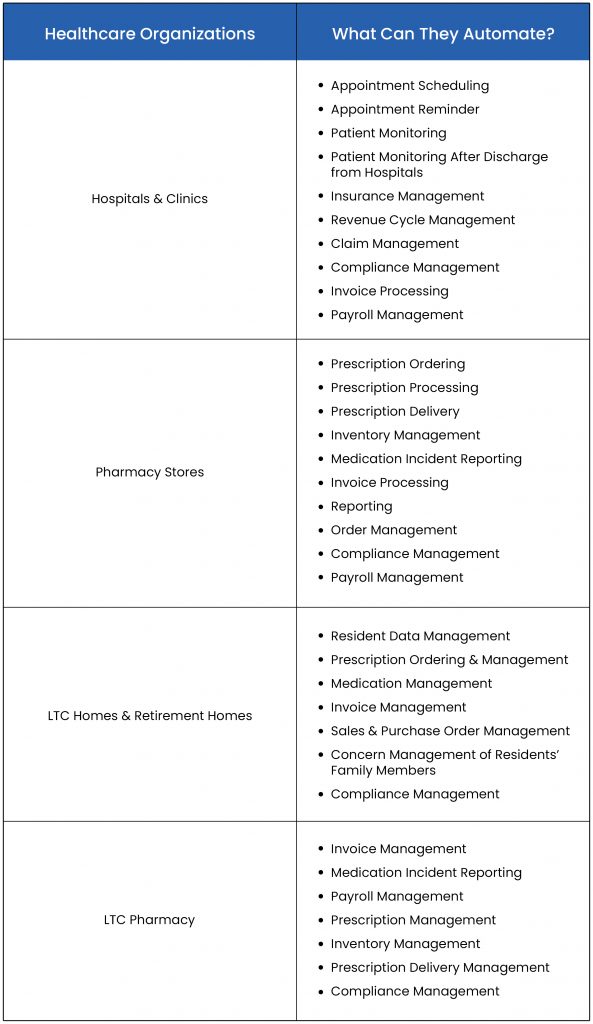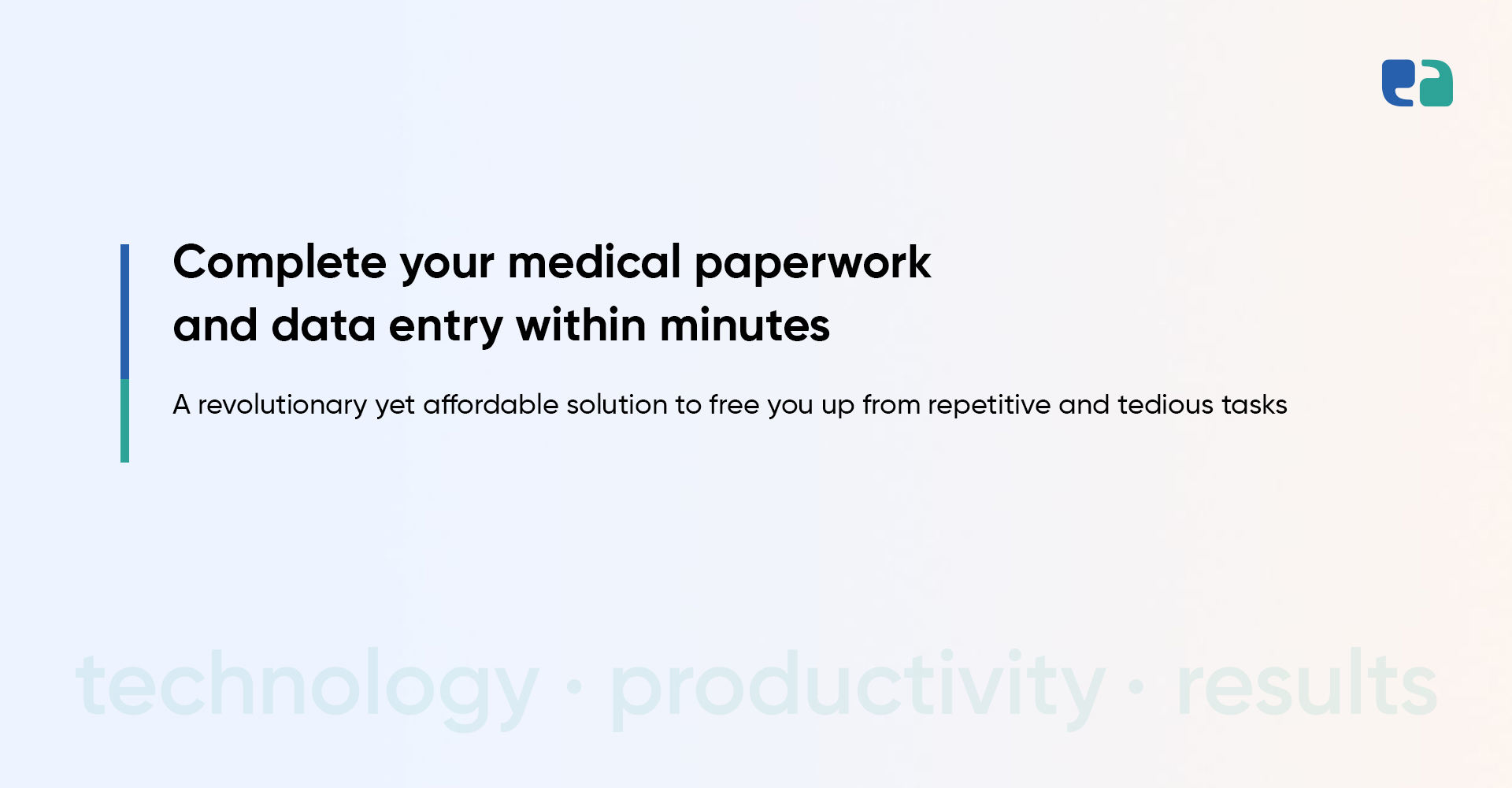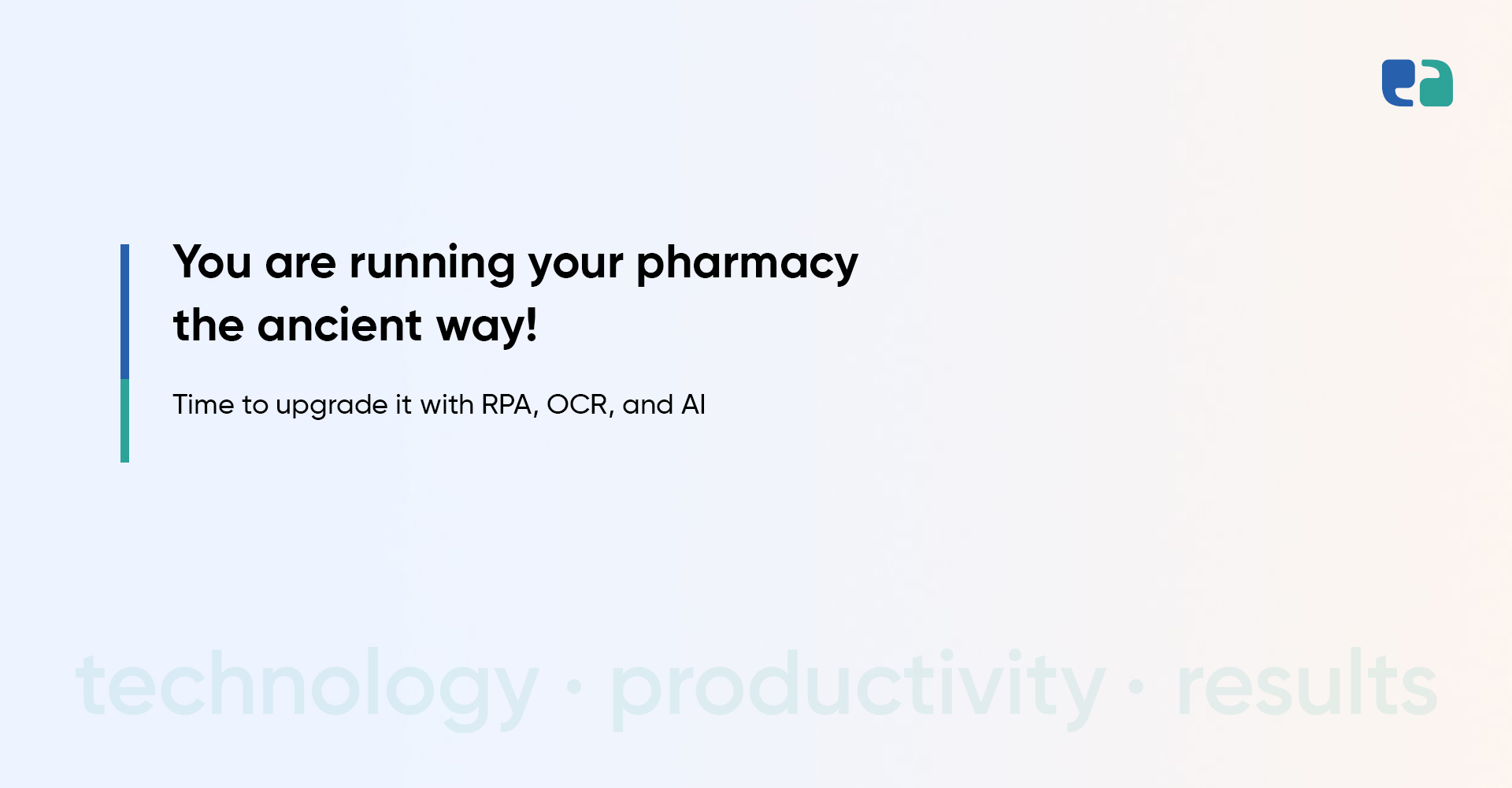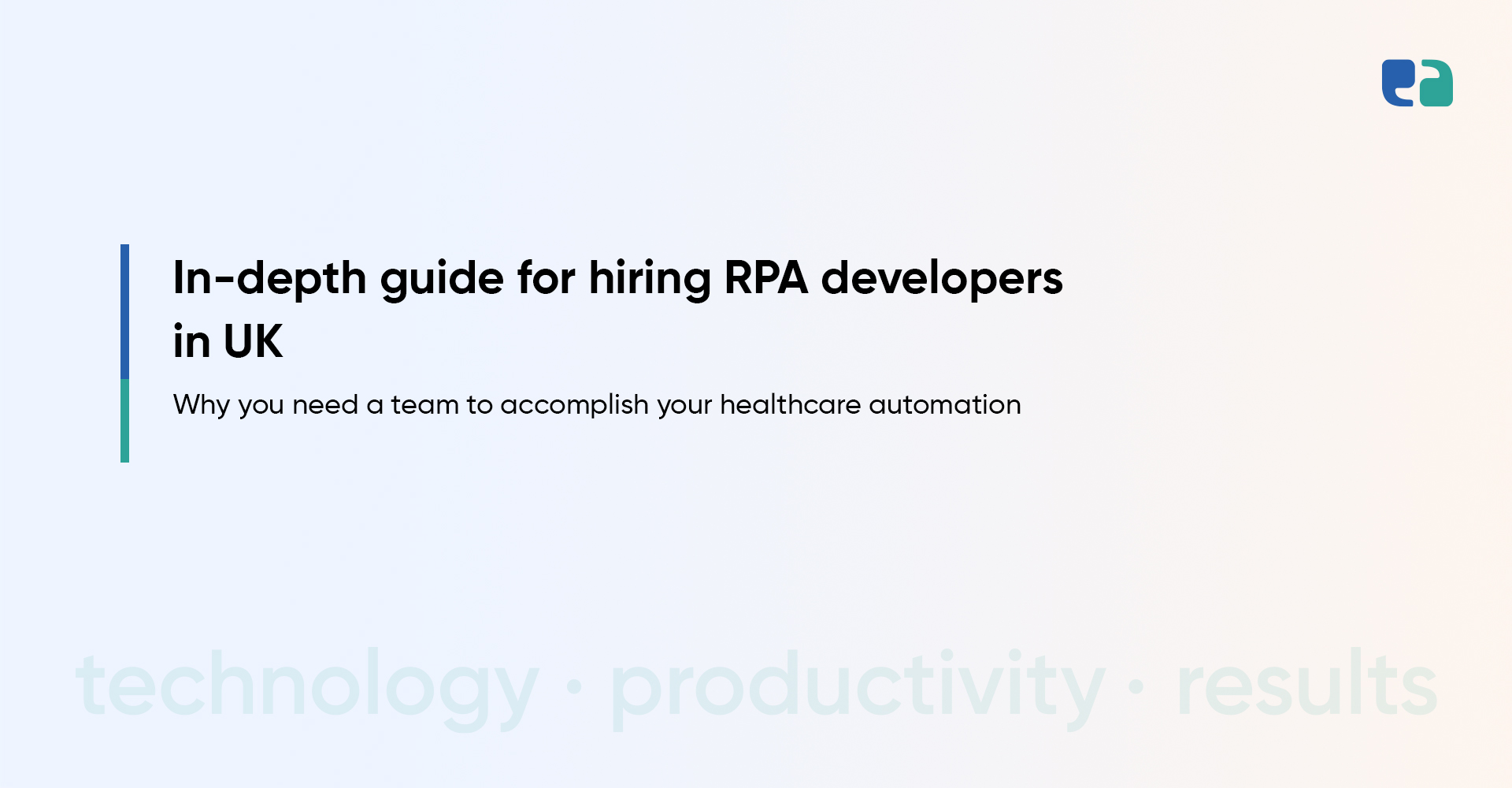Quick Summary – Managing a patient’s appointments, onboarding, medications, concerns, and claims is more exhausting than treating the patients.
Among the limitless number of tasks, the doctor gets busier with data management rather than patient care.

To restrict healthcare professionals from spending time and effort on tasks except for patient care, all we need to do is make that process automated.
But what is RPA?
If you enjoy sitting relaxed and watching the car automatically navigate city traffic, you would love the automation process in healthcare.
RPA executes processes on computers by itself, from scheduling appointments, ordering prescriptions, and sending invoices to managing claims that make staff less burdened and relaxed.
Accuracy and efficiency are two outcomes of this new technology.
Interested to know more about this magical technology that wipes out errors & inefficiency and improves patient outcomes?
This blog includes,
- What to automate
- How to automate
- Cost to automate
Let’s bring it on!
What is robotic process automation in healthcare?
RPA seems a perfect technology – with no limitations. But there are limitations related to scenarios where we can apply automation.
If we change the perspective, these limitations are advantages for us to determine what we can automate.
For example, one of the RPA limitations is that it only works perfectly on a process with fixed input and output. Meaning, we need to find a process with fixed input and output and automate it!
Let’s find it out.
Think, which are the processes in your healthcare organization with fixed input and output? One approach I know is appointment booking.
A patient calls (fixed input), and the phone attendant books the appointment (fixed output).
Similarly, find other processes that you can automate (or we will do that for you without cost).
Other scenarios where you can apply automation:
- More Errors (i.e., Data Entry Process)
- Multiple Sources of Information (i.e., Patient Medical History Related Process)
- Labor-intensive processes (i.e., Invoicing Process)
To help you quickly discover the process that can be automated, we’ve listed the top functions of different healthcare organizations.

How to automate healthcare processes?
Your primary concern should be the cost of automation implementation. But it is also essential to know how to automate a process not to overshoot the budget and claim high ROI.
How much does it cost to implement RPA in healthcare?
Yes, automation is a significant investment. And thus, the money you save with automation matters more than the money you spend on automation.

Here is the quick calculation, not to make you feel good, but to make you realize the money you are wasting without automation!
The software bot replaces the human’s repeated tasks, reduces time, and utilizes it for more critical studies.
If you pay $40,000 monthly to a team of 10 employees processing invoices but replace the team with an invoicing robot that costs you $10,000, you would save $30,000 a month!
Remember, we haven’t calculated the indirect financial benefits in terms of accuracy, compliance, patient experience, operational efficiency, staff accommodation, training, etc.
Call it technology, tool, or approach; this robotic process makes your organization more productive and values additional accuracy.
You read an entire guide, but we never recommend you spend the money on it straight. Our approach is to save your cost. Take a moment and talk with us, and we are happy to transfer knowledge about robotic process automation.
Call: +1 905 635 7574
Email: talk@syscreations.ca
Our investment in the best RPA developers and resources to make automation works best for the healthcare industry.
We also need you to have a word with our R&D engineers who are spending their weeks practicing cognitive RPA and making healthcare a whole new level of technology.







